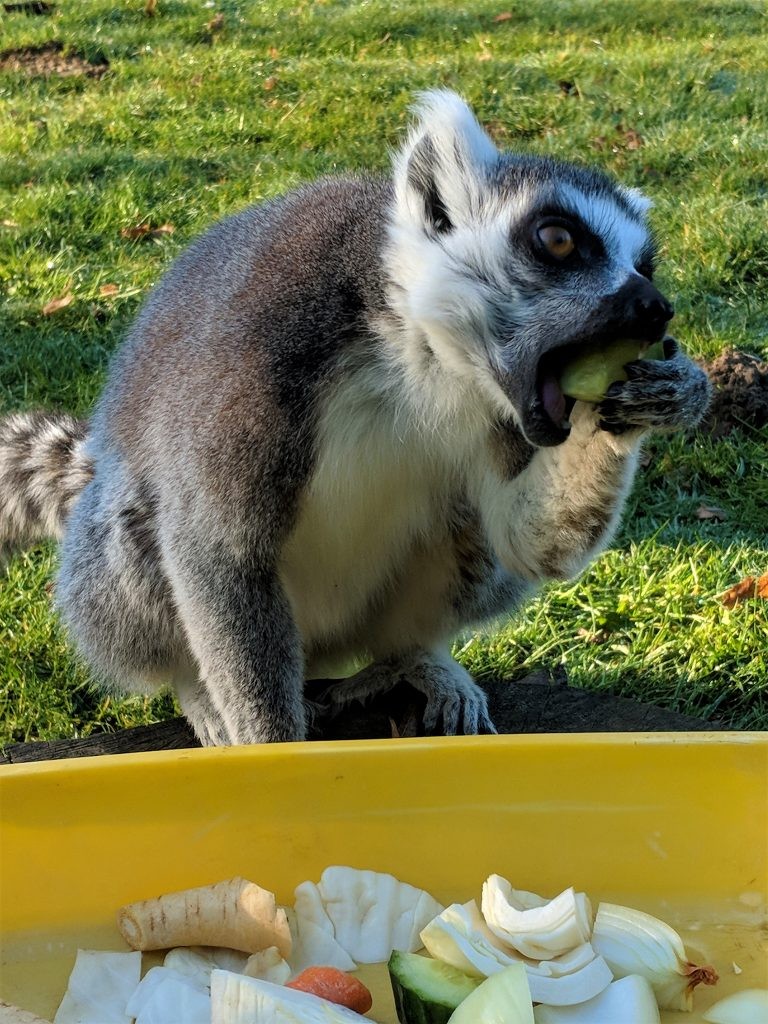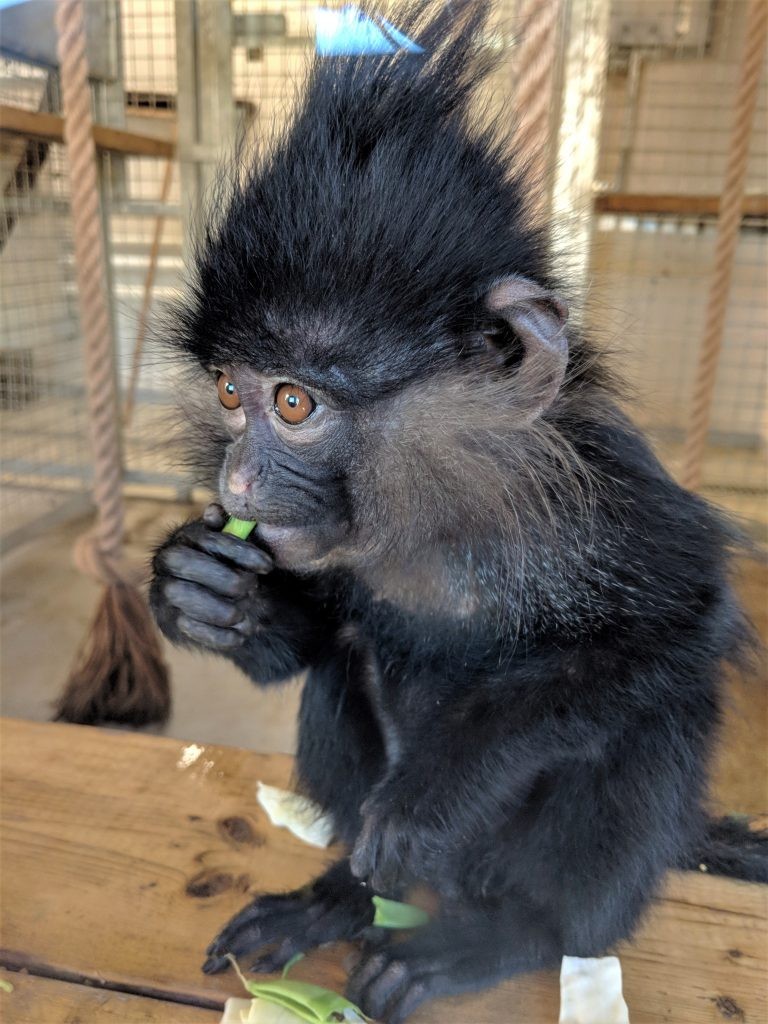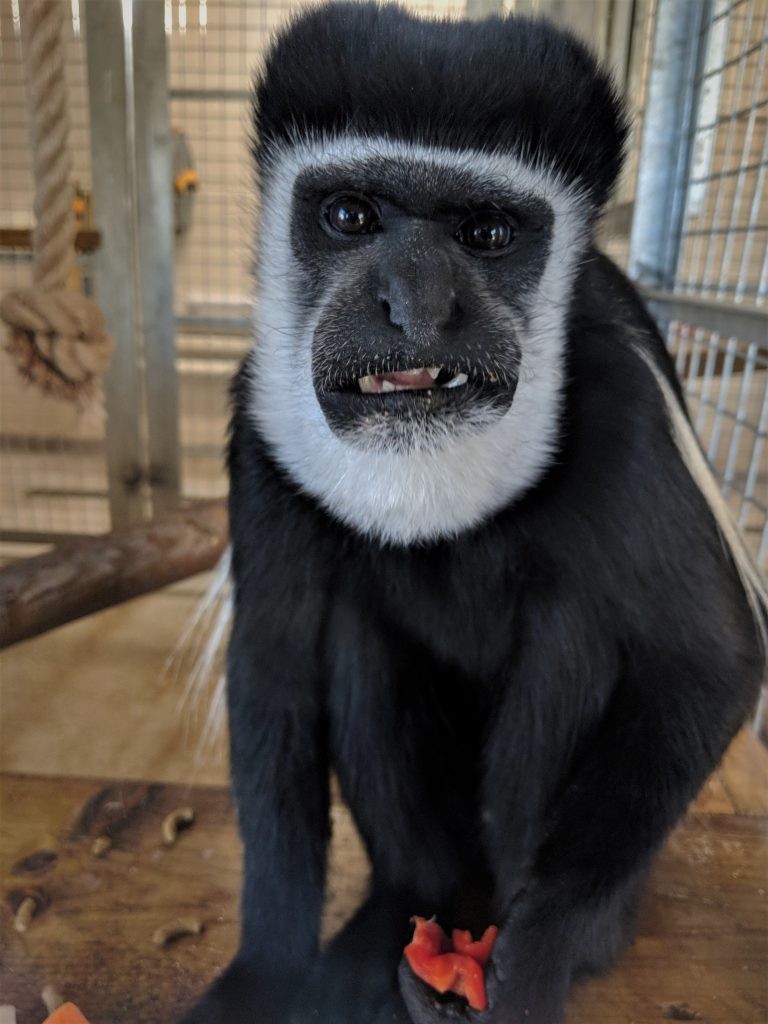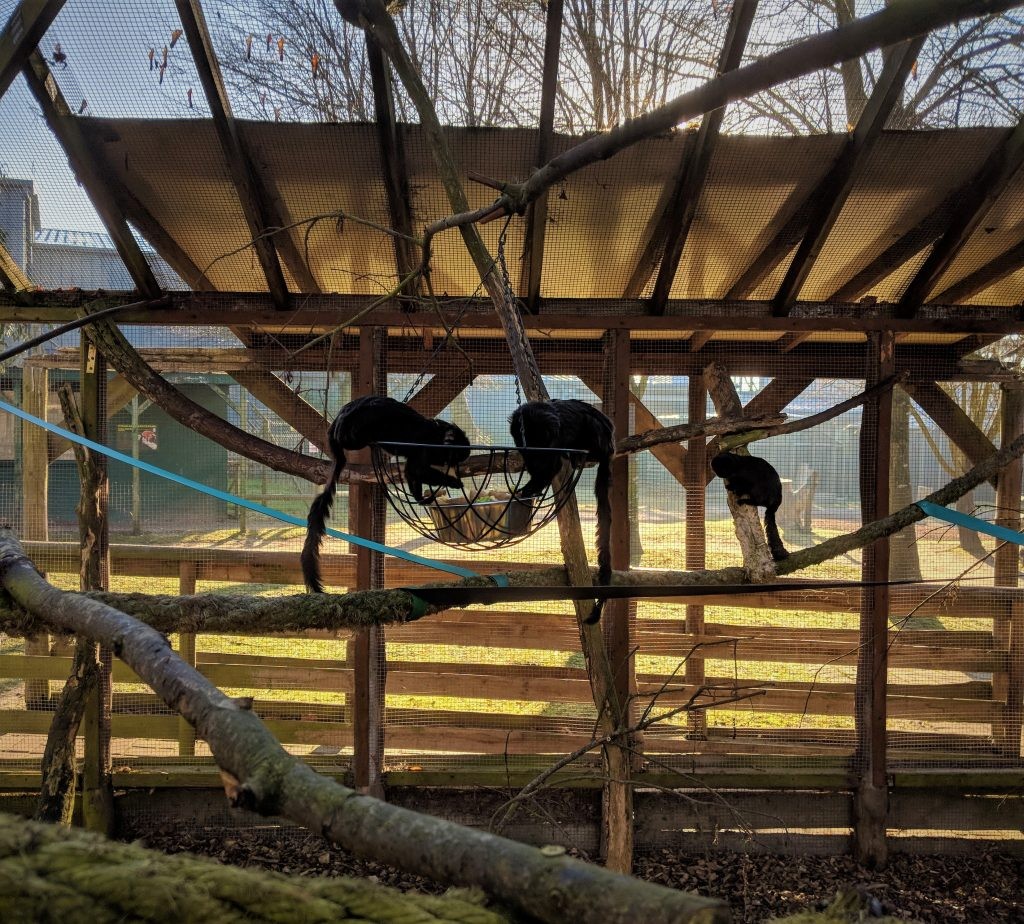At the end of last year we decided at the park that we would change all of our primate’s diets to fruit free to cut out as much sugar as we could and increase their fibre intake. This was a result of continuing research being carried out across zoo’s all around the world into what are the best diets for captive primates.
Our original diets looked something like this
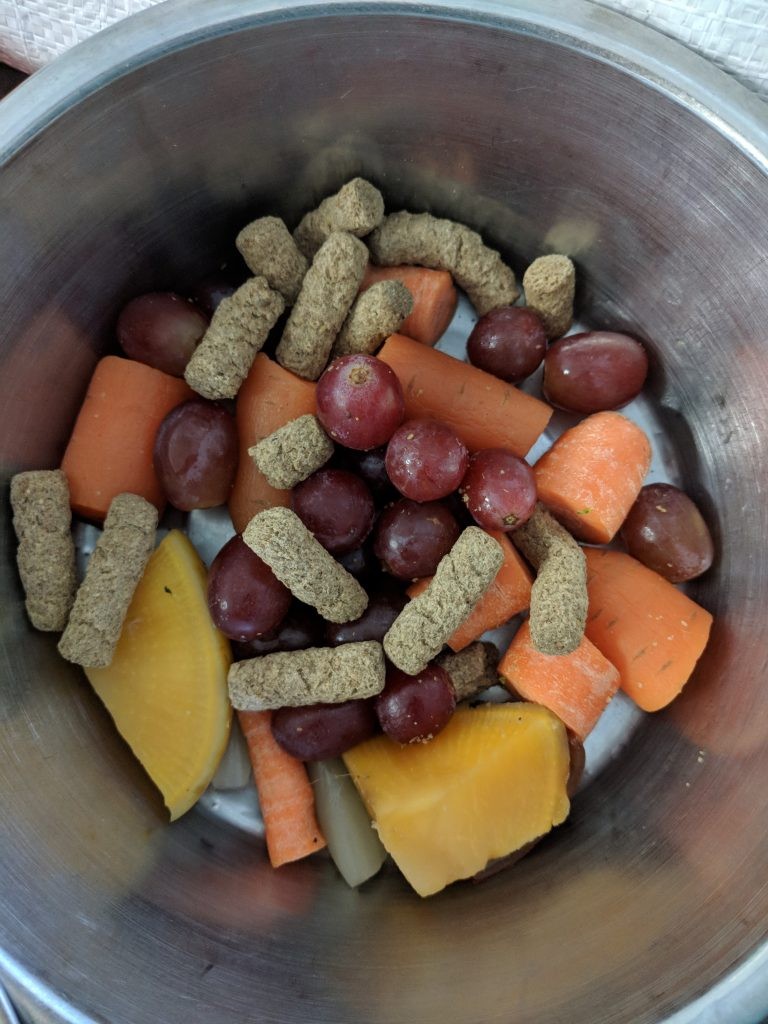
Our new primates diets now look like this
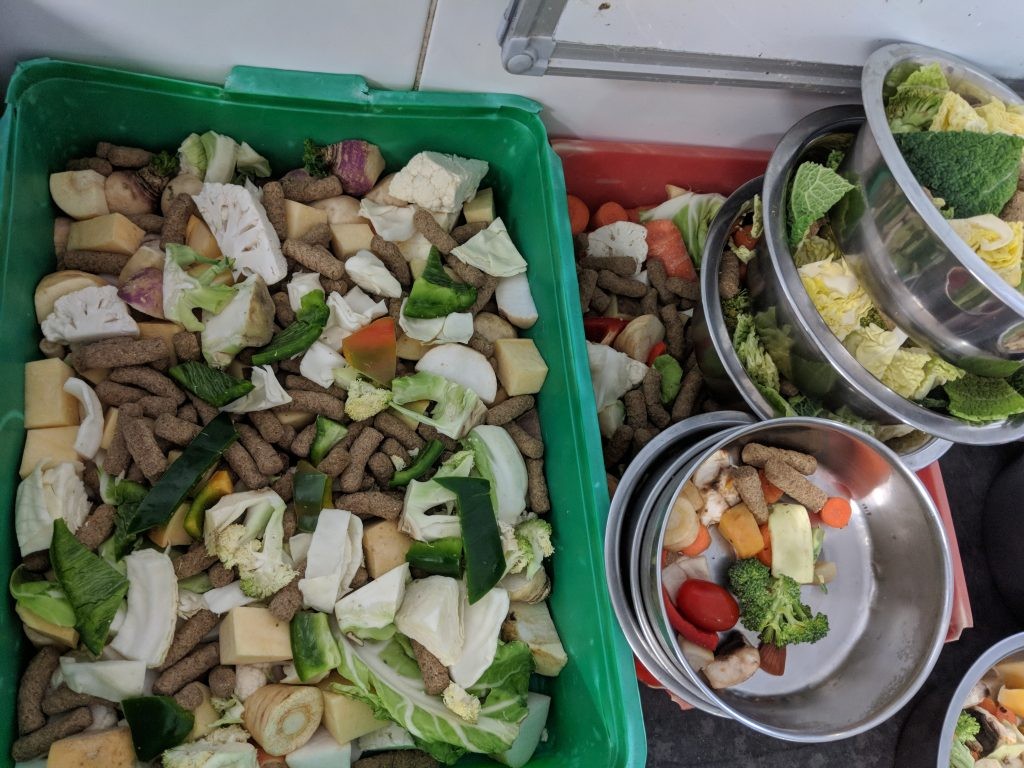
Implementing Change
Some of our primates have been transitioning to a fruit free diet for a number of months now, so that they could slowly get used to the change of having no fruit. The smaller primates such as the marmosets and tamarins can be a little stubborn when it comes to food and if we suddenly gave them no fruit we may have found them starting to attack keepers in protest. They may be small but when it comes to being aggressive the cotton top tamarins in particular have a reputation amongst the keepers.
This diet change would be very closely monitored with the primate keepers recording everything that the primates eat and also their body condition/faecal consistency.
Giving primates a lot of fruit can result in the same effect as giving a child a lot of sweets, hyperactivity, mood swings, obesity and tooth decay to name but a few.
“But don’t monkeys eat bananas in the wild?” I hear you ask – that’s what everyone says and that’s what you’re taught as a child from various books and films, but is it true?
Well to an extent, but not banana’s as we know them.
Commercial vs Wild Fruits
All of the fruit and vegetables that we eat in this country have been commercially grown to suit human tastes. That means more sugar and less fibre to make them taste better and easier to eat. A banana that we eat looks nothing like the banana’s that are found in the wild. They are a lot smaller with much bigger seeds and less soft flesh.
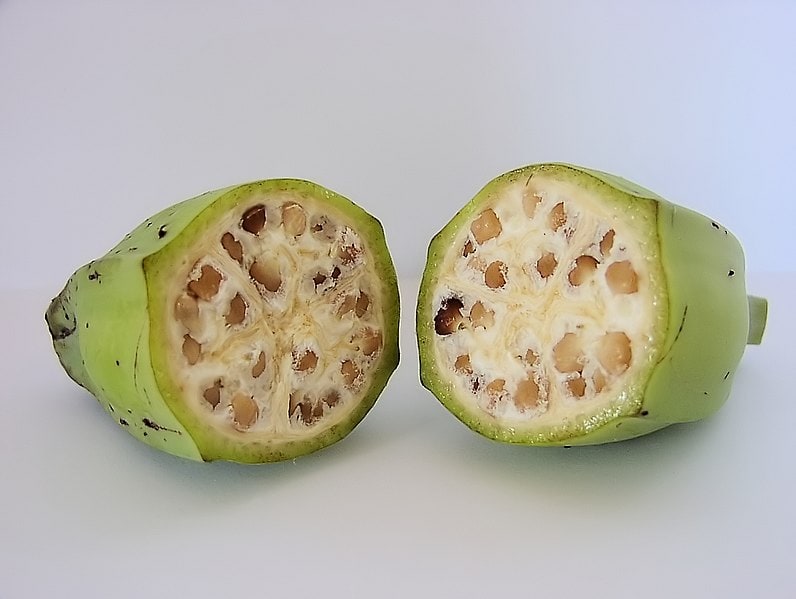
Photo credit, Warut Roonguthai
Commercially grown bananas contain around 12% sugar and about 2.6% fibre.
Finding information about wild bananas nutritional value can be difficult but, the bananas wild counterpart is used un-ripened to make a flour in Brazil by drying the banana out in the sun and then grinding it down. ResearchGate suggest that this flour contains around 1.81% sugar and an astonishing 56% fibre.
The same applies to the majority of commercially available fruits and vegetables where their wild counterparts contain a lot less sugar and more fibre.
So What Effect Has The New Diet Had On Our Primates?
Even though this has only been undertaken for a couple of months we have already seen a difference in some of our primates, with less aggression at meal times between individuals and improvements in coat condition.
For primates in the wild that do eat naturally occurring fruits their diet wouldn’t contain very much sugar, because the fruit doesn’t contain much. This means for captive primates, especially in countries where you are unable to access to a more wild diet, that we have to adapt their diets with what we have available.
The majority of our primate’s diets now consist of vegetables, specialised monkey pellets, marmoset gum (for the marmosets and tamarin species), insects and browse (different types of trees and plants that are safe for primates to eat). Trying to match the primates nutritional requirements can be tricky with what we are able to buy, but the right diets result in healthier primates.
See for yourself how much our ring-tailed lemurs like their new diet by feeding them on our Lemur Experience.
Here are some of our primates enjoying their new breakfasts,
